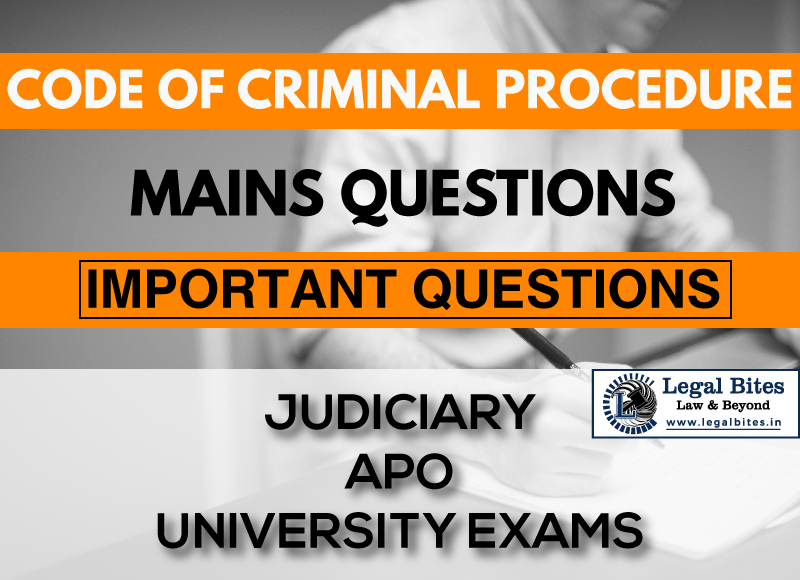A and B are being tried for the murder of C. During the trial, it appears to the court from the evidence adduced that D was also in the conspiracy with A and B for the murder of C. Can D be made accused by the trial court?
Question: A and B are being tried for the murder of C. During the trial, it appears to the court from the evidence adduced that D was also in the conspiracy with A and B for the murder of C. Can D be made accused by the trial court? Find the answer only on Legal Bites. [A and… Read More »
;
Question: A and B are being tried for the murder of C. During the trial, it appears to the court from the evidence adduced that D was also in the conspiracy with A and B for the murder of C. Can D be made accused by the trial court?
Find the answer only on Legal Bites. [A and B are being tried for the murder of C. During the trial, it appears to the court from the evidence adduced that D was also in the conspiracy with A and B for the murder of C. Can D be made accused by the trial court?]
Answer
According to section 319 of the Code of Criminal Procedure, the Court is empowered to proceed against any person not shown or mentioned as accused if it appears from the evidence that such person has committed an offence for which he could be tried together with the main accused against whom an inquiry or trial is being held.
It has been held by the Constitution Bench of the Supreme Court in the landmark case of Hardeep Singh v. State of Punjab, AIR 2014 SC 1400 that the power to add a new accused under section 319 is very wide and extensive. While persons not named in the FIR can be added as accused and those named in the FIR but not charge-sheeted can be added, even a person discharged earlier can be added after recourse to sections 300(5) and 398.
“The test to be applied is the one which is more than a prime facie case as examined at the time of framing charge but not of satisfaction to the extent that the evidence, if goes uncontroverted, would lead to the conviction of the accused.”
The Supreme Court has reiterated that to add a person as an additional accused under Section 319 of the Code of Criminal Procedure, stronger evidence is required than the mere probability of complicity of that person.
However, the order under section 319 should be passed at the earliest and at the proper stage and within a reasonable period, not at the time of pronouncing the judgment.
Thus, applying the aforesaid provision and the decisions of the Supreme Court to the present case at hand, it is clear that if it appears to the court from the evidence adduced that D was also in the conspiracy with A and B for the murder of C, D can also be made accused by the trial court.
Important Mains/Long Questions for Judiciary, APO & University Exams
- CRPC Mains Questions Series Part I: Important Questions
- CRPC Mains Questions Series Part II: Important Questions
- CRPC Mains Questions Series Part III: Important Questions
- CRPC Mains Questions Series Part IV: Important Questions
- CRPC Mains Questions Series Part V: Important Questions
- CRPC Mains Questions Series Part VI: Important Questions
- CRPC Mains Questions Series Part VII: Important Questions
- CRPC Mains Questions Series Part VIII: Important Questions
- CRPC Mains Questions Series Part IX: Important Questions
- CRPC Mains Questions Series Part X: Important Questions
- CRPC Mains Questions Series Part XI: Important Questions

